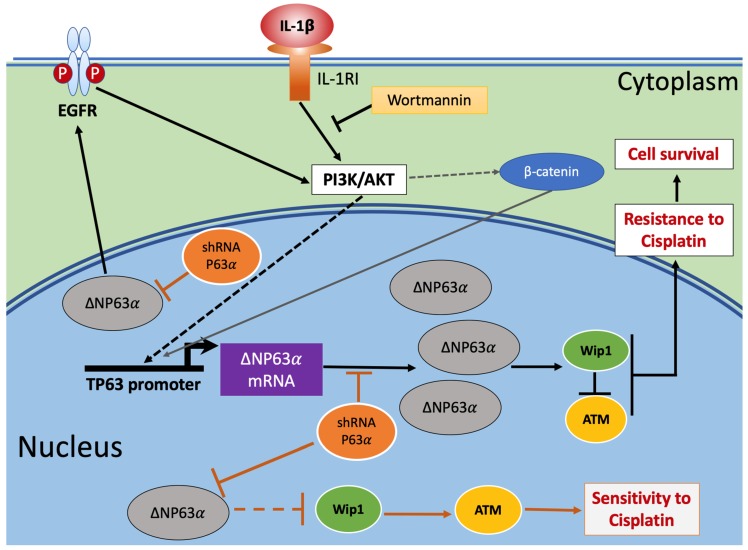Figure 4.
Graphical model of IL-1β activation of signaling pathways leading to acquisition of resistance to cisplatin in breast cancer cells. Triggering of the IL-1β/IL-1RI/β-catenin pathway by IL-1β induces the activity of downstream effectors phosphoinositide 3-kinase (PI3K)/protein kinase B (AKT) [4], leading to translocation of β-catenin to the nucleus and regulation of proteins that participate in the acquisition of resistance to cisplatin. The induced upregulation of ΔNp63α regulates the expression of cell survival (pEFGR) and DNA damage response (Wip1 and ATM) proteins. At the same time, the increased levels of ΔNP63α activate EGFR, which, through a feed-back loop, maintains PI3K/AKT activity and the continuity of the downstream signaling initiated by IL-1β, which leads to resistance to cisplatin. However, if ΔNP63α overexpression is hampered by silencing its mRNA (shRNAP63α), the lower levels of ΔNP63α expressed in the cells will not be sufficient to maintain high levels of Wip1, thereby increasing ATM levels and the sensitivity to cisplatin. Dashed arrows indicate indirect positive modulation in the pathway that was previously reported [4,14]. The link between low levels of ΔNp63α and Wip1 is represented in the figure with a dashed line because the step(s) leading to decreased levels of Wip1 are not yet well identified.

